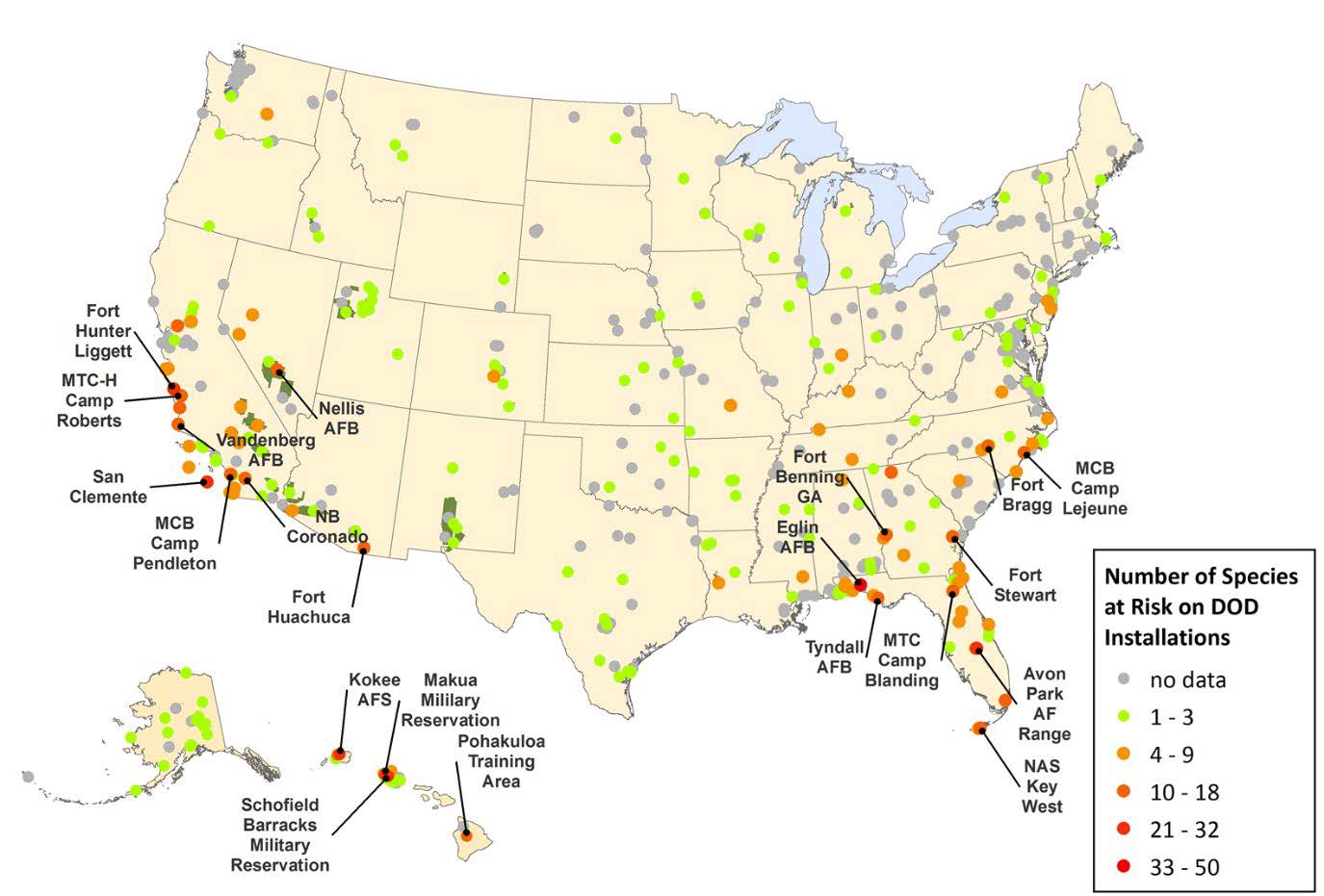Proactive conservation of unlisted but imperiled species on and around DoD installations can help preclude the need for federal listing under the Endangered Species Act. For this reason, DoD has commissioned studies to document what at risk-species occur on or adjacent to military lands in order to better target such proactive conservation efforts (Benton 2004, NatureServe 2011, NatureServe 2015). In the most recent (2015) analysis, for DoD purposes “species at risk” are defined as plant and animal species not federally listed as threatened or endangered under the Endangered Species Act, but that are either: federally designated as proposed or candidates for listing; assessed by the NatureServe Network as critically imperiled or imperiled (G1 or G2) throughout their range; or are birds with a NatureServe global rank of vulnerable (G3) or an IUCN conservation status rank of threatened (CR, EN, or VU) or near-threatened (NT).9 The most recent survey found that 555 such at-risk species occurred on or near DoD installations, of which 7% were federal candidates, 27% were critically imperiled, 62% imperiled, and 4% vulnerable birds (NatureServe 2015).10 Of these, 74 species are restricted (or mostly so) to DoD lands. The highest number of at-risk species were found on Eglin Air Force Base (FL), Schofield Barracks (HI), and Makua Military Reserve (HI), all of which have more than 25 at-risk species (Fig. 1.10).
9The International Union for Conservation of Nature (IUCN) Red List of Threatened Species (www.redlist.org) uses an extinction risk assessment process similar to NatureServe’s global ranks.
10Excluding bird species included solely based on IUCN status, the total number of species at risk on DoD installations is 531 (NatureServe 2015).

Figure 1.10. Species at risk on or near DoD installations. Based on 2014 data, the highest numbers of DoD-defined species at risk were found on Eglin Air Force Base (FL), Schofield Barracks (HI), and Makua Military Reserve (HI): Each of these installations has more than 25 at-risk species (Adapted from NatureServe 2015).
Go to next page: Evolving Approaches to Military Natural Resource Management
Author
Bruce Stein, Ph.D., Chief Scientist and Associate Vice President
National Wildlife Federation
Biodiversity on Military Lands Sections
Biodiversity on Military Lands
